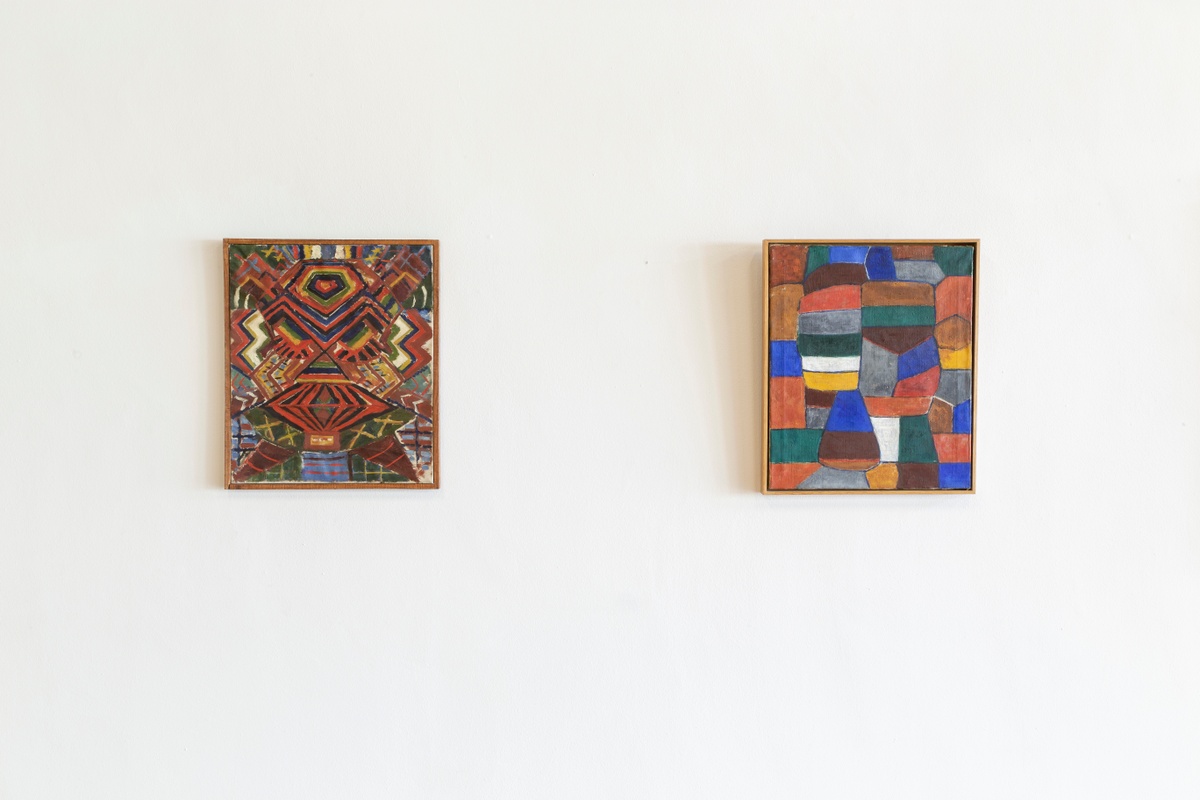Ernest Mancoba
In Composition, Macoba’s earliest painting, the mask-like, geometric form that would later recur in many of his works first appears. From the 1940s onwards, this mask would prove an aesthetic stepping-stone from pictorial realism to stylistic representation, and later to pure abstraction. The abstract, Mancoba believed, was familiar to African art objects, which seldom reflected the physical world and made no overture to naturalism. It was only a question of stripping down the residual elements that made such a mask recognisable as face, distilling its image to an essential form – a constellation of colours and marks. The resulting oscillation between the figurative and abstract in Mancoba’s work, had, as he suggested, “the capacity to unite in our vision the outward aspect with the inner significance.”
b.1904, Turffontein; d.2002, Clamart
In death, Ernest Mancoba has found more critical attention and acknowledgement than he did in life. He has been granted, in absentia, such significant titles as "the first South African modernist" and "the first black modernist". In 1938, Mancoba left segregated South Africa to live in France, where he met his wife, the Danish artist Sonja Ferlov, and joined the avant-garde CoBrA collective. His preoccupations, however, never entirely aligned with those of his European counterparts. Throughout his career, Mancoba resisted category: his paintings and drawings were never entirely abstract nor entirely figurative, were at times minimalist and spare, at others dense and overworked. To his detractors, the artist’s work was neither Western enough nor African enough. Such dichotomies, however, were of little interest to Mancoba, who pursued a more utopian expression of art. The ideal would be, he wrote, “not to please the eye or the senses but to use art as a means, as a language to express feelings and ideas in relation to the present, the future and the past, to discover new concepts by which to regard the world for the salvation of man.”


